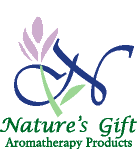 We’ve all learned
that pink grapefruit is considered “stimulating, energetic, a great way to get
I don’t dispute that
description at all, it is a perky scent.
But listen to this description given by Mark Webb of a different
oil: “The best description I can give
for my first impression of (this oil) is WOW…what a bright, happy essential
oil.” “More Lemon than Lemon” (1)
We’ve all learned
that pink grapefruit is considered “stimulating, energetic, a great way to get
I don’t dispute that
description at all, it is a perky scent.
But listen to this description given by Mark Webb of a different
oil: “The best description I can give
for my first impression of (this oil) is WOW…what a bright, happy essential
oil.” “More Lemon than Lemon” (1)
That would be Mark’s
description of Backhousia citriodora F. Muell, commonly known as Lemon Myrtle,
Lemon Scented Myrtle, and Lemon Ironwood.
The oil comes from a large shrub that can be found along coastal
rainforests of southern to mid Queensland, Australia. The leaves are nearly 4 inches in length, and
the white, clustered, four petal flowers bloom in early summer. The oil is collected from aerial parts
through steam distillation. (1)
 |
| Photo courtesy of Dennis Archer |
How could it be more
“Lemon than Lemon”? Two compounds allow
for the lemon scent of essential oils, Citral, and Citronellal. Both belong to a family of compounds known as
aliphatic (non-fatty) aldehydes. The
major chemical constituent of Lemon Myrtle is citral (90%-98%). Lemon Essential Oil (Citrus limonum) only
contains between 3-10% citral.
Citral is used in the food and flavoring industry as lemon
flavoring and lemon-scented products. It
is also used as a raw material when producing aromatic chemicals such as
Vitamin A and ionones. (1)
Webb suggests the
use of this oil as a diffusion to ‘clear out the cobwebs’, as well as in
culinary applications. He does warn that
it only takes one or two drops to get that lemony zing. The essential oil is said to have properties
of being antiseptic, antiviral, carminative, sedative, and decongestive. Due to the natural actions of citral, this
oil must not be used undiluted or unquenched, as it will cause skin irritation.
(1)
Tisserand mentions a
potential for adulteration with synthetic citral, and warns of drug
interactions, skin sensitivity, and congenital malformations. He extends warnings for those using diabetic
medication, pregnancy, hypersensitive, diseased, or damaged skin, and advices
not to use with children under the age of 2. (2)
(1)Mark Webb. Bush
Sense, Australian Essential Oils and Aromatic Compounds, Adelaide,
Australia: Griffin Press, 2000.
(2) Robert
Tisserand/Rodney Young. Second Edition,
Essential Oil Safety: Churchill
Livingstone, 2013.
My notes:
My first introduction to this sparkling oil was through Dennis Archer, the founder of Australia's first organic Lemon Myrtle plantation.
Dennis put a royal respect for this oil's ability to irritate the skin and cautioned me to never use it topically, and we still do not. He also stressed the antibacterial properties of the oil, and suggested using it in a room or counter spray, or diffusing it. Dennis also shared suggested culinary uses. You may read more, and order your own supply here.


No comments:
Post a Comment